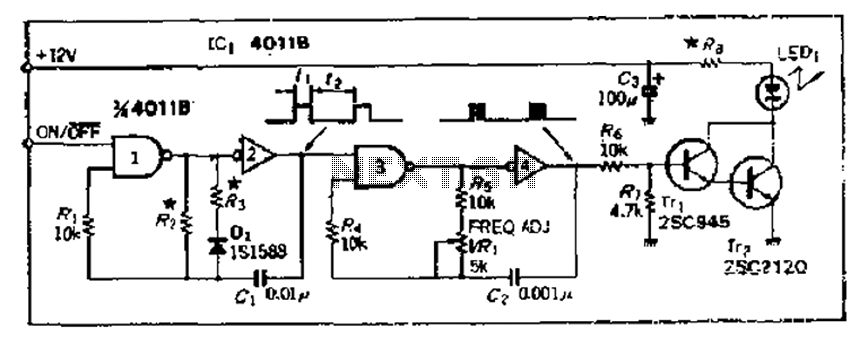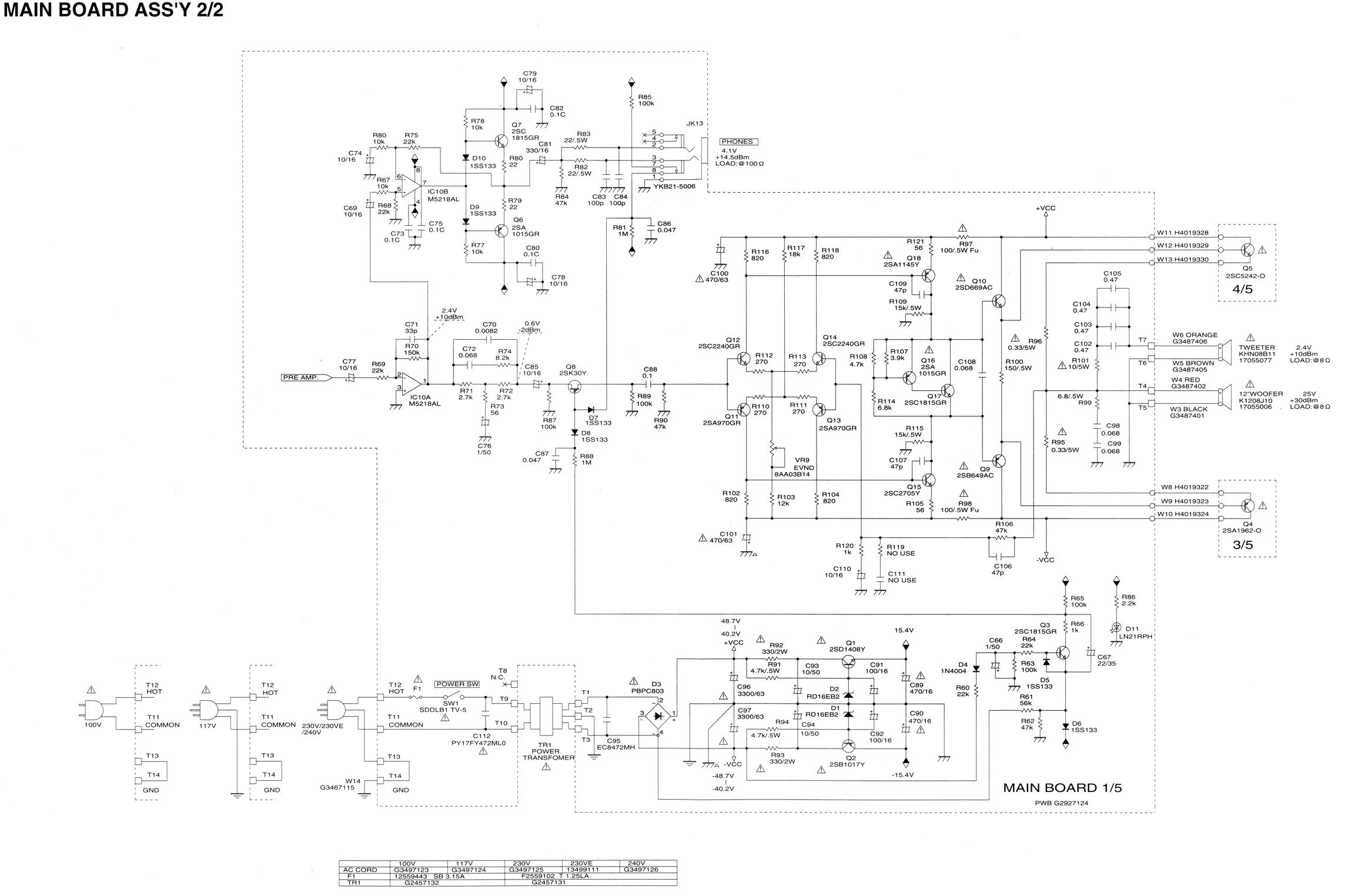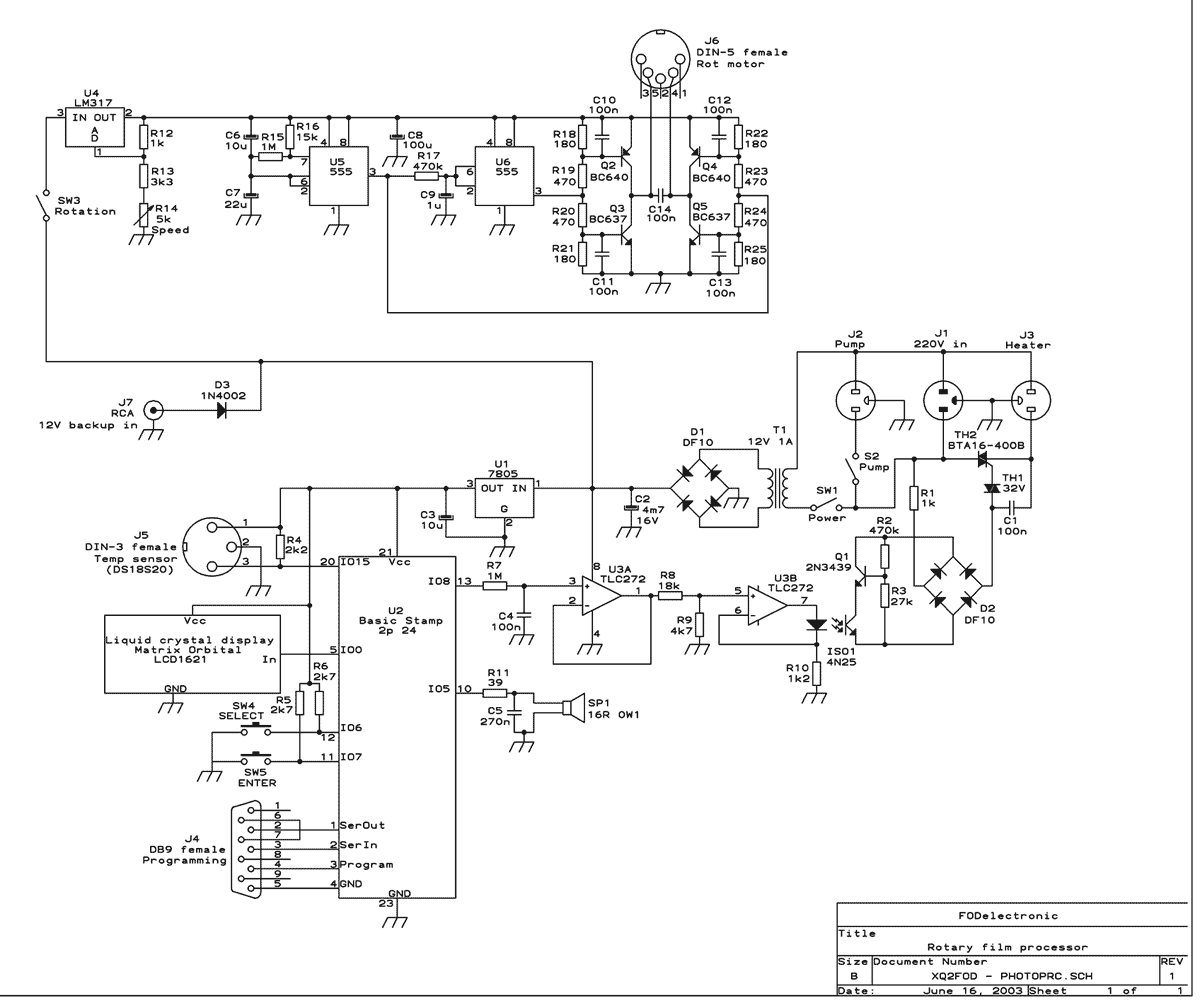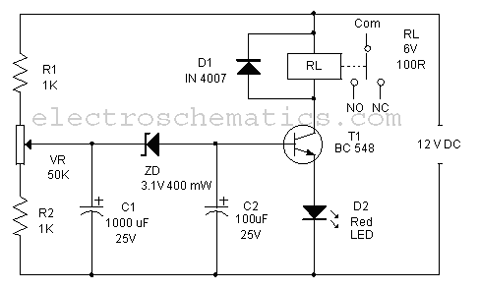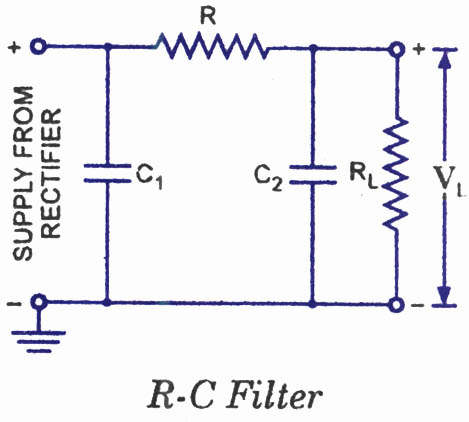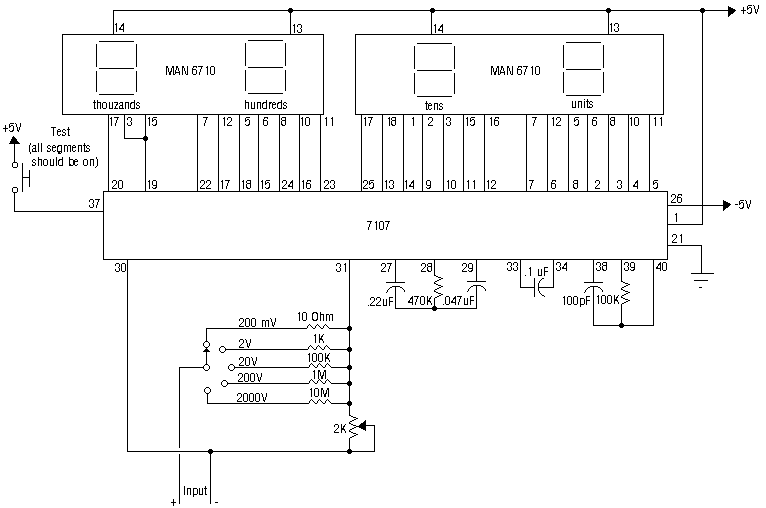
0-40V lab power supply circuit diagram electronic project using LM723 L146
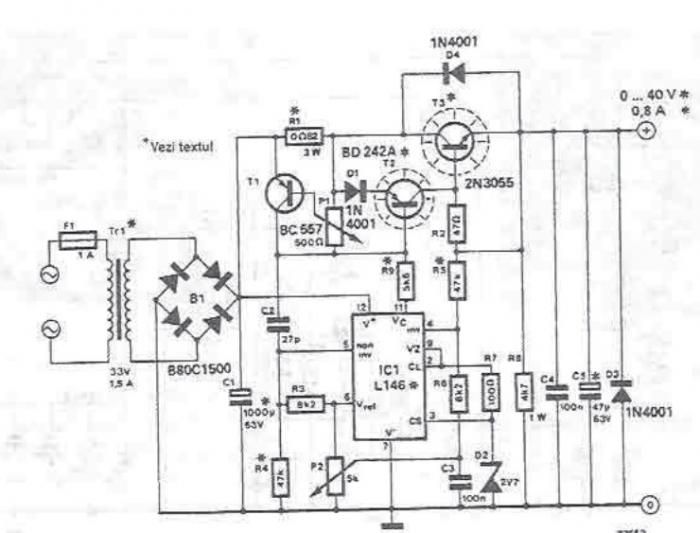
An adjustable laboratory power supply capable of providing an output voltage range from 0 to 60 volts can be constructed using the provided circuit diagram. This power supply can utilize the LM723 chip for lower voltage applications or, for higher output voltages, the L146 chip. The output current is also adjustable; however, once set, it remains effective. Table 1 outlines the modifications necessary to achieve three different maximum output voltage configurations (30V, 40V, and 60V). The electrical diagram presented below illustrates the alternative configuration for 40V at 0.8A using the L146 chip, which offers superior voltage stabilization compared to the LM723. Typically, a minimum stabilized output voltage of 2V is achievable with integrated circuits. The resistive network composed of R3, R4, and R5, R6 circumvents this limitation, allowing the output to be adjusted to 0V using potentiometer P2. The selection of semiconductor capacitors will depend on the specific output requirements. It is essential to limit the output current to prevent power dissipation from exceeding 40W. For the 40V version, the maximum output current is 0.8A. To increase the current output, two 2N3055 transistors can be connected in parallel, utilizing emitter resistors, although this configuration necessitates a transformer rated for 2A.
The adjustable laboratory power supply circuit is designed to provide a versatile and reliable source of DC voltage for various electronic applications. The LM723 voltage regulator is a well-established component known for its ability to maintain a stable output voltage, while the L146 offers enhanced performance for higher voltage applications. The circuit is configured to allow for fine-tuning of both voltage and current outputs, making it suitable for testing and powering a wide range of devices.
The circuit diagram highlights the integration of a resistive network that effectively mitigates the minimum output voltage limitation typically associated with integrated circuits. By employing potentiometer P2, users can achieve a full range of output voltages down to zero, which is particularly beneficial for applications requiring precise voltage control.
The choice of capacitors in the circuit is critical as they must be selected based on the required output characteristics, including ripple voltage and load stability. Additionally, the power dissipation must be carefully monitored to ensure that the transistors do not exceed their thermal limits. The inclusion of parallel 2N3055 transistors allows for greater current handling capabilities, which is essential when powering devices that require higher currents. This configuration, however, demands a transformer capable of supplying sufficient current, thereby ensuring the overall stability and reliability of the power supply.
In summary, this adjustable power supply circuit is a robust solution for laboratory environments, providing flexibility in voltage and current outputs while ensuring safe operation through careful component selection and configuration.A very lab adjustable power supply that can provide an output voltage between 0 and 60 volts can be designed using this circuit diagram. This lab power supply can be designed with LM723 chip or for higher output voltages, with L146. Output current is also adjustable, but once established, is always effective. Table 1 shows the values to be modif ied to have three different versions of the maximum output voltage (30, 40 and 60 V). Electrical diagram below shows the alternative 40 V / 0. 8 using L146 chip because it can stabilize higher output voltage, much better than the LM723. Normally, 2 V is the minimum voltage stabilized that even an integrated circuit can provide. Resistive network R3, R4 and R5, R6 "kill" this restriction so that output can be set to 0 V with potentiometer P2. Depending on the output requirements, will be decided on the type and the semiconductor capacitors to be used.
Output current must be limited so as to keep power dissipation of 40 W. T3 under maximum output current for 40 V version is 0. 8 A. It can connect two parallel 2N3055 transistors (with emitter resistors) to double the current output, but in this case requires a 2 A transformer 🔗 External reference
The adjustable laboratory power supply circuit is designed to provide a versatile and reliable source of DC voltage for various electronic applications. The LM723 voltage regulator is a well-established component known for its ability to maintain a stable output voltage, while the L146 offers enhanced performance for higher voltage applications. The circuit is configured to allow for fine-tuning of both voltage and current outputs, making it suitable for testing and powering a wide range of devices.
The circuit diagram highlights the integration of a resistive network that effectively mitigates the minimum output voltage limitation typically associated with integrated circuits. By employing potentiometer P2, users can achieve a full range of output voltages down to zero, which is particularly beneficial for applications requiring precise voltage control.
The choice of capacitors in the circuit is critical as they must be selected based on the required output characteristics, including ripple voltage and load stability. Additionally, the power dissipation must be carefully monitored to ensure that the transistors do not exceed their thermal limits. The inclusion of parallel 2N3055 transistors allows for greater current handling capabilities, which is essential when powering devices that require higher currents. This configuration, however, demands a transformer capable of supplying sufficient current, thereby ensuring the overall stability and reliability of the power supply.
In summary, this adjustable power supply circuit is a robust solution for laboratory environments, providing flexibility in voltage and current outputs while ensuring safe operation through careful component selection and configuration.A very lab adjustable power supply that can provide an output voltage between 0 and 60 volts can be designed using this circuit diagram. This lab power supply can be designed with LM723 chip or for higher output voltages, with L146. Output current is also adjustable, but once established, is always effective. Table 1 shows the values to be modif ied to have three different versions of the maximum output voltage (30, 40 and 60 V). Electrical diagram below shows the alternative 40 V / 0. 8 using L146 chip because it can stabilize higher output voltage, much better than the LM723. Normally, 2 V is the minimum voltage stabilized that even an integrated circuit can provide. Resistive network R3, R4 and R5, R6 "kill" this restriction so that output can be set to 0 V with potentiometer P2. Depending on the output requirements, will be decided on the type and the semiconductor capacitors to be used.
Output current must be limited so as to keep power dissipation of 40 W. T3 under maximum output current for 40 V version is 0. 8 A. It can connect two parallel 2N3055 transistors (with emitter resistors) to double the current output, but in this case requires a 2 A transformer 🔗 External reference
